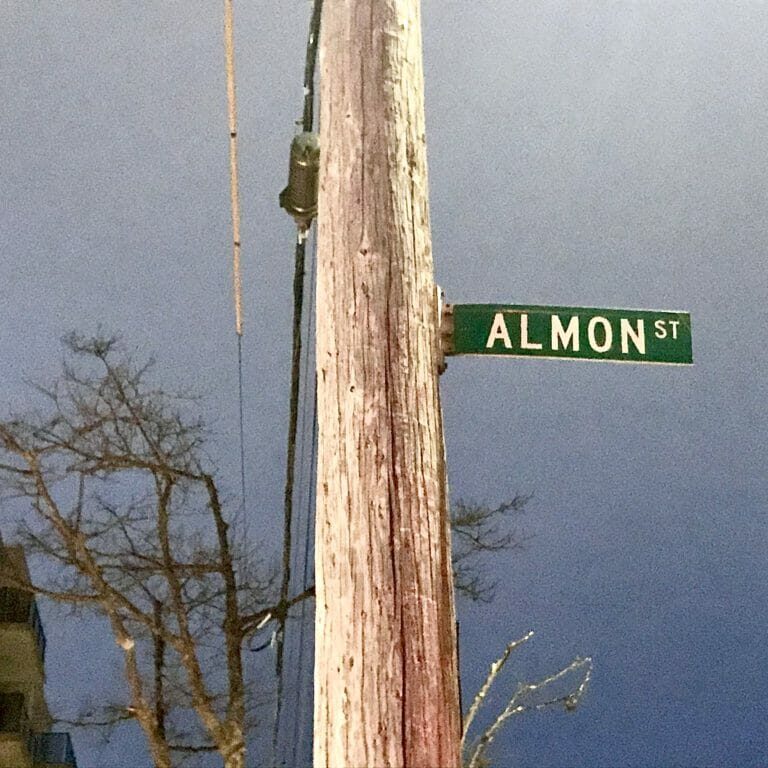
Who the heck were the Almons?
A medical dynasty tinged with corruption, Confederate support and aiding pirates
With files from Vicky Messervey
Halifax is a city that wears the legacies of its inhabitants on its buildings, statues and street signs. Almon Street is no exception. Cutting across the city from the west end to north end, Almon Street serves as one of the last public reminders of a once prominent family.
Early Haligonian doctor
Travel back to the late 1700s, to the days when Halifax was just a British settlement. Almon would have been a well-known name. This was thanks to the efforts of William James Almon, a physician originally from Rhode Island.
When the American Revolutionary War broke out, William James sided with the British and came to Halifax to serve as a military surgeon. He planted his roots in the city and established a private medical practice. He also worked as a physician at Halifax’s poor house — essentially a government-funded housing shelter that also served as a public hospital.
Along with Duncan Clark and John Halliburton — two other prominent Haligonian doctors — William James served as a regular physician for Prince Edward Augustus. The British royal lived in Halifax for about five years.
A controversial history
Of William James’s five children, two of his sons enjoyed very prosperous careers. Mather Byles Almon established the Bank of Nova Scotia in 1832 with a group of wealthy Haligonians.
William Bruce Almon followed in his father’s footsteps and became a doctor, earning a degree from the University of Edinburgh. He ran a drug and medicine store and began practicing medicine with his father at the poor house. He assumed the position altogether when William James died in 1817. Like his father, William Bruce was heavily influential in Nova Scotia’s medical scene.
The medical legacy trickled down another generation in the Almon family with William Bruce’s son, William Johnston Almon. He succeeded his father as physician in the poor house and was well-known for being one of the first doctors in North America to use chloroform as an anaesthetic.
William Johnston had a list of accomplishments that stretched a mile long, which include fighting for the establishment of Halifax’s first hospital, being one of the founders of Dalhousie University’s faculty of medicine and getting elected as a member of parliament. But for all his extensive achievements, it is with William Johnston that the Almon family legacy becomes permanently and publicly entwined with controversy.
The Almons were staunchly conservative in politics, and like many other prominent Haligonians, they had ties to slavery. The family and their extended relatives owned slaves and were compensated in relinquishing ownership of them. Like the infamous Lord Dalhousie, they directly benefited from slave trade in the West Indies.
The Chesapeake Affair
William Johnston was vocal about his support of the Confederacy during the American Civil War. He is known for his aiding in the escape of Confederate pirate and murderer George Wade in what is now referred to as the Chesapeake Affair.
In 1863, a band of Maritime Confederate sympathizers captured the American steamer Chesapeake. Among the sympathizers was Wade, a New Brunswicker, who murdered one of Chesapeake’s American crewmembers. Wade was arrested by American forces when the Chesapeake stopped to load coal in Sambro, N.S. But then, William Johnston and other prominent Haligonians, including Alexander Keith Jr., came to Wade’s rescue.
As William Johnston and his fellow criminals distracted the police, Wade managed to escape onto a whaler waiting nearby. It is said that when a sergeant at the scene drew his gun, William Johnston and his crew wrestled the man to the ground. Everyone involved in Wade’s escape got off scot-free, quite likely because of their wealth and upper-class status.
Almon Street was originally known as Paris Street and was part of a subdivision intended to have all its streets named after European cities. Having been renamed sometime before 1885, it is not clear whether the street is to commemorate one specific Almon or the family as a whole.
“Who the heck?” is a rotating history column in the Gazette’s Arts & Lifestyle section, reporting on the namesakes of buildings and institutions on campus and around the city. Have an idea on who we should feature next? Contact arts@dalgazette.com.
Editor’s note: On April 3, this article was updated to clearly attribute Vicky Messervey’s research as a key source for this article. This should have happened upon initial publication and the Gazette apologizes for the oversight. Check out her blog post here.






